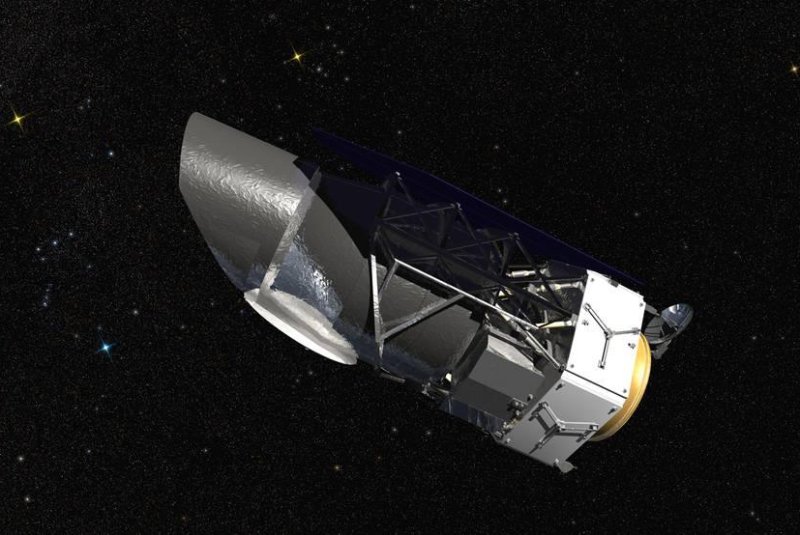NASA's Wide Field Infrared Survey Telescope, or WFIRST, will carry a Wide Field Instrument to capture Hubble-quality images covering large swaths of sky, enabling cosmic evolution studies. Its Coronagraph Instrument will directly image exoplanets and study their atmospheres. Photo by NASA/GSFC/Conceptual Image Lab
WASHINGTON, Feb. 22 (UPI) -- NASA is using old spy telescope hardware to build and launch a satellite the agency says will be 100 times more powerful than the Hubble Space Telescope, the agency has announced.
The Wide Field Infrared Survey Telescope will launch sometime in the 2020s, and is expected to help scientists learn about dark energy and dark matter, as well as see much farther beyond the solar system than they previously could.
"WFIRST is designed to address science areas identified as top priorities by the astronomical community," Paul Hertz, director of NASA's Astrophysics Division in Washington, said in a press release.
WFIRST will travel about a million miles from Earth, away from the sun, to the gravitational balance point, known as a Lagrange point, Earth-Sun L2, and begin observations of the universe from there.
The telescope can measure shapes, positions and distances of galaxies to track their growth, including galaxy clusters and the dark matter near them. The scientists say the new telescope will help answer questions about the structure and evolution of the universe because of the large area and distances it can observe.
NASA will turn its attention to WFIRST after the 2018 launch of the James Webb Space Telescope, which will pick up many of the exploratory tasks of the Hubble Space Telescope
"WFIRST has the potential to open our eyes to the wonders of the universe, much the same way Hubble has," said John Grunsfeld, associate administrator of NASA's Science Mission Directorate. "This mission uniquely combines the ability to discover and characterize planets beyond our own solar system with the sensitivity and optics to look wide and deep into the universe in a quest to unravel the mysteries of dark energy and dark matter."















